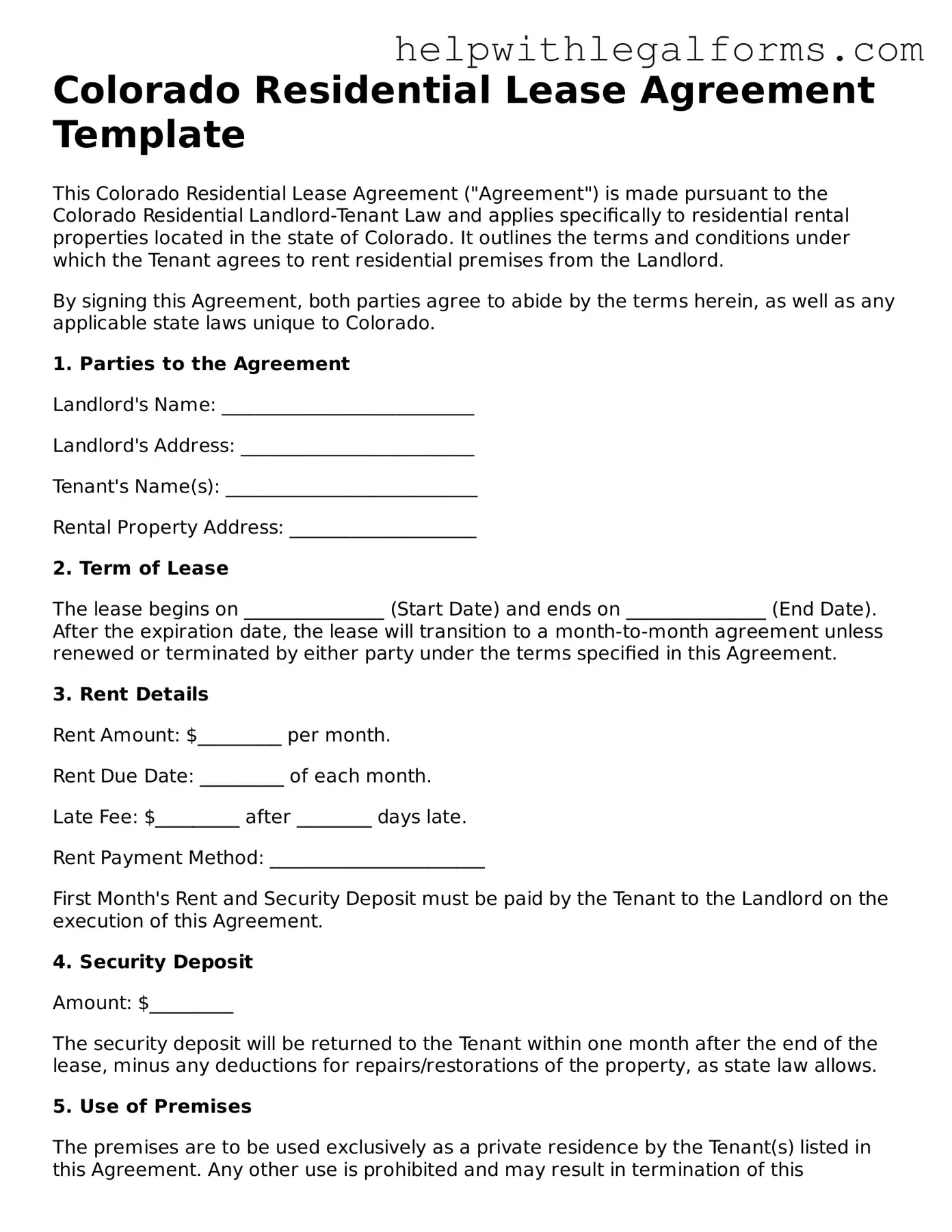Colorado Residential Lease Agreement Template
This Colorado Residential Lease Agreement ("Agreement") is made pursuant to the Colorado Residential Landlord-Tenant Law and applies specifically to residential rental properties located in the state of Colorado. It outlines the terms and conditions under which the Tenant agrees to rent residential premises from the Landlord.
By signing this Agreement, both parties agree to abide by the terms herein, as well as any applicable state laws unique to Colorado.
1. Parties to the Agreement
Landlord's Name: ___________________________
Landlord's Address: _________________________
Tenant's Name(s): ___________________________
Rental Property Address: ____________________
2. Term of Lease
The lease begins on _______________ (Start Date) and ends on _______________ (End Date). After the expiration date, the lease will transition to a month-to-month agreement unless renewed or terminated by either party under the terms specified in this Agreement.
3. Rent Details
Rent Amount: $_________ per month.
Rent Due Date: _________ of each month.
Late Fee: $_________ after ________ days late.
Rent Payment Method: _______________________
First Month's Rent and Security Deposit must be paid by the Tenant to the Landlord on the execution of this Agreement.
4. Security Deposit
Amount: $_________
The security deposit will be returned to the Tenant within one month after the end of the lease, minus any deductions for repairs/restorations of the property, as state law allows.
5. Use of Premises
The premises are to be used exclusively as a private residence by the Tenant(s) listed in this Agreement. Any other use is prohibited and may result in termination of this Agreement.
6. Maintenance and Repairs
The Tenant agrees to keep the leased premises in a clean and habitable condition and to notify the Landlord promptly of any damage or necessary repairs. The Landlord is responsible for maintaining the property in accordance with state law and making any agreed repairs in a timely manner.
7. Alterations and Improvements
The Tenant must obtain written consent from the Landlord before making any alterations, additions, or improvements to the premises.
8. Governing Law
This Agreement shall be governed by and construed in accordance with the laws of the State of Colorado.
9. Entire Agreement
This document constitutes the entire agreement between the parties and supersedes any previous agreements or understandings regarding the rental of the property. Any changes to this Agreement must be made in writing and signed by both parties.
10. Signatures
By signing below, both the Landlord and the Tenant acknowledge that they have read, understood, and agree to the terms and conditions of this Agreement.
Landlord's Signature: _________________________ Date: ____________
Tenant's Signature(s): _________________________ Date: ____________
